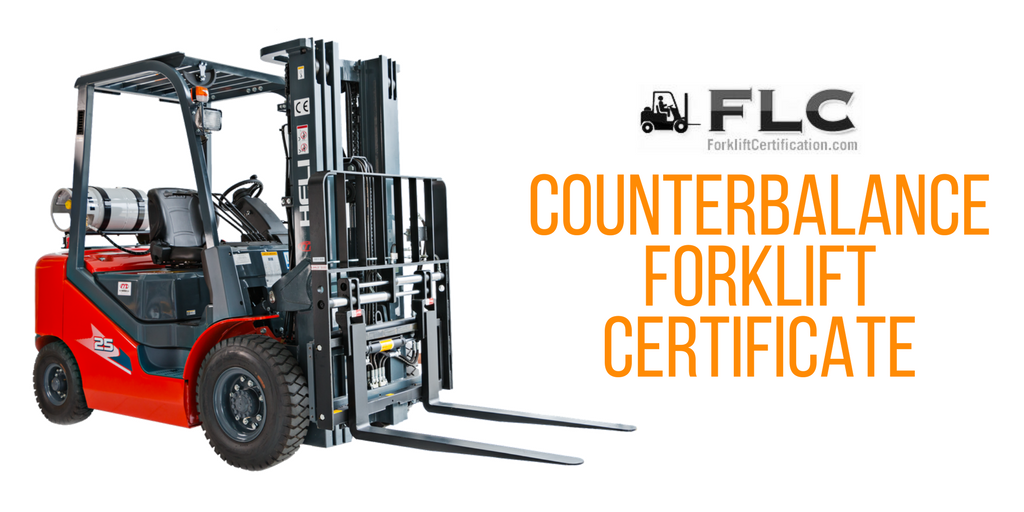Counterbalance Forklifts: Operation, Safety, Compliance & More
Counterbalance trucks are used for a variety of material handling tasks. From warehouses to shipyards, from distribution centers to manufacturing facilities, they’re one of the most common types of powered industrial trucks.
Here’s another aspect of counterbalance forklifts that’s in line with similar equipment: as an employer, you need to provide OSHA compliant training and certification. Tough task, right? Not if you have ForkliftCertification.com (FLC) in your back pocket. We provide thorough, affordable counterbalance truck training for your entire workforce. Get started today with FLC!
What is a Counterbalance Truck?
Counterbalance trucks are, at first appearance, exactly like any other forklift. Two forks for lilting, wheels, a front mast, the whole nine yards. But there’s a difference. To counterbalance heavy loads, this type of lift has considerable bulk and weight in the back of the vehicle.
This unique design promotes exceptional stability, even during cargo transport. As a result, counterbalance forklifts are one of the most popular, widely used lifts going today. Despite these inherent design advantages, counterbalance trucks are still susceptible to accidents.
As a result, you need to ensure all of your employees have counterbalance forklift training. FLC is here to help with everything you need.
How to Operate a Counterbalance Forklift
Remember riding the seesaw as a kid? A counterbalance forklift moves similar to the seesaw method. Counterbalance forklifts include the following attributes which operators need to be aware of:
- Fulcrum front axle mechanism
- Counterweight at rear of vehicle
- Additional counterweight with additional fork load
When driving a counterbalance forklift, the fulcrum is the main “pivot point” of the truck, and the front axle provides stability between the loaded weight (pallets, other cargo) and the rear counterbalance (Lift Code 1 design, according to OSHA).
With FLC’s counterbalance forklift training, all of these are taken into account. We’ll show your workers the correct way – and the safest way – to operate any counterbalance truck!
Counterbalance Forklift Training & Certification
OSHA standard 1910.178 defines the safety, training and operational guidelines for all counterbalance trucks, which are classified in four different OSHA categories:
- Class I: Electric Motor Rider Trucks
- Class III: Electric Motor Hand Trucks or Hand/Rider Trucks
- Class IV: Internal Combustion Engine Trucks (Solid/Cushion Tires)
- Class V: Internal Combustion Engine Trucks (Pneumatic Tires) Class II: Electric Motor Narrow Aisle Trucks
Training is required for all of your operators, and we have the courses and content to ensure you’re OSHA compliant:
- Training Kit – popular course for counterbalance trucks
- Train a Trainer – the easiest way to get your own training coordinator
- Bundle Package – includes both packages listed above at a special discount
Like any other OSHA compliant training program, FLC’s courses include templates, step-by-step guides, evaluation forms, concise instruction, a 100% pass rate and more!
Consequences of Skipping Counterbalance Training & Certification
While counterbalance forklifts are designed for stability, accidents like tip-overs happen. And safety violations are common. According to a study by CertifyMe.net, our sister compliance & safety company, over half of all companies surveyed had their counterbalance forklift training programs audited, with many firms confirming fines exceeding $100,000 – and in many cases, much more than that!
Don’t become part of another accident or injury statistic. Control your company’s safety the smart, affordable way with FLC. Your employees deserve nothing but the absolute safest workplace, and we’ll show you how easy it is. Sign up with FLC today!

